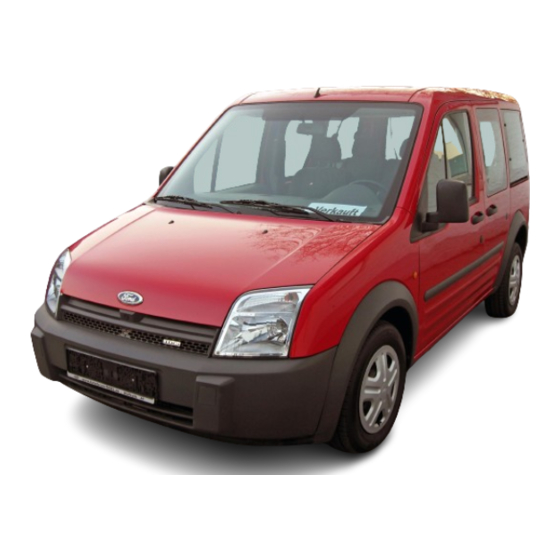
Table of Contents
Advertisement
General Information - About This Manual
Description and Operation
Introduction
This manual has been written in a format that is designed to meet the needs of technicians
worldwide. The objective is to use common formats and include similar content in each
manual.
This manual provides general descriptions for accomplishing diagnosis and testing, service
and repair work with tested, effective techniques. Following them will help assure reliability.
Special Tools
The special tool(s) table provided at the beginning of each procedure shows all special tools
required to carry out a repair. Where possible, illustrations are provided to assist in
identifying the special tool required.
Important Safety Instructions
Appropriate service methods and correct repair procedures are essential for the safe,
reliable operation of all motor vehicles as well as the personal safety of the individual
carrying out the work.
This manual cannot possibly anticipate all such variations and provide advice or cautions as
to each. Anyone who departs from the instructions provided in this manual must first
establish that he compromises neither his personal safety nor the vehicle integrity by his
choice of methods, tools or components.
Warnings, Cautions and Notes in This Manual
WARNING: Warnings are used to indicate that failure to follow a procedure correctly
may result in personal injury.
CAUTION: Cautions are used to indicate that failure to follow a procedure correctly
may result in damage to the vehicle or equipment being used.
NOTE: Notes are used to provide additional essential information required to carry out a
complete and satisfactory repair.
As you read through this manual, you will come across WARNINGS, CAUTIONS and NOTES.
A warning, caution or note is placed at the beginning of a series of steps if it applies to
multiple steps. If the warning, caution or note only applies to one step, it is placed at the
beginning of the specific step (after the step number).
How to Use This Manual
This manual covers diagnosis and testing, service and repair procedures.
This manual is structured into groups and sections, with specific system sections collected
together under their relevant group.
A group covers a specific portion of the vehicle. The manual is divided into five groups,
General Information, Chassis, Powertrain, Electrical and Body and Paint. The number of the
group is the first number of a section number.
Pages at the start of the manual list all sections available. Each section has a contents list
detailing Specifications, Description and Operation, Diagnosis and Testing, In Vehicle
Repairs, Disassembly and Assembly, Removal and Installation.
If components need to be removed or disassembled in sequence, the sequence will be
identified numerically in a graphic and the corresponding text will be numbered accordingly.
All left and right-hand references to the vehicle are taken from a position sitting in the
Transit/Tourneo Connect 2002.5 (06/2002-)
http://vnx.su
Print
Advertisement
Table of Contents

















Need help?
Do you have a question about the Transit 2002 and is the answer not in the manual?
Questions and answers
What is the warning light under the cigarette lighter